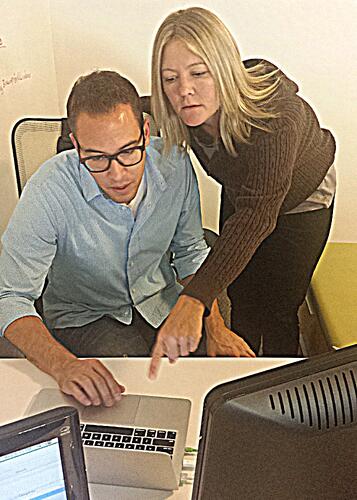Sometimes the simplest change can unleash the potential of your work force. A case in point is learning how to talk openly with each other at BeyondCurious. After taking a hard look at ourselves during a challenging period, we recently implemented an approach for more open communication that we call "straight talk." Straight talk is not a euphemism for providing occasional performance feedback; it's a simple but powerful way of thinking that encompasses candid communication across the organization at all times. I believe straight talk can help your company become more efficient and effective, as it has with BeyondCurious.
Straight talk came about after BeyondCurious endured some tough growing pains. We were achieving our goals and scaling to meet the demand, but it was obvious to me that we weren’t taking the most efficient path in getting there, causing unnecessary stress and rework. I was sensing frustration and knew I had to solve the puzzle quickly. Fortunately, in a close-knit organization, you can get the pulse of the work place fairly quickly. And indeed I got to the heart of the matter in short order: we were not being straight with each other.
Ironically, the friendliness of people on our team was generating a challenge I had not expected to encounter. Because we get along so well, too often we were failing to confront each other over issues such as blown deadlines or work that was not meeting expectations. In other words, we were not holding each other accountable, and the lack of accountability was making our life harder than it needed to be.
We realized that only by being straight with each other could we truly sustain a culture of empowerment and growth. We had to learn how to get the point across plainly and directly but to do so without being hurtful. We also needed a process that allowed everyone to feel empowered to communicate this way. Straight talk is that process. These are its elements:
- A shared vocabulary. We agreed on a code phrase, "straight talk," that gives us permission to confront each other in a positive way. "Straight talk" is a verbal signal for both parties that an issue requires addressing. If you missed a recent deadline and I am worried that the problem might happen again, I might say, "Straight talk: our deadline is two weeks from now, and you missed our last deadline. I want to know what support you need so we can make this one."
- Universal application. Straight talk is not just for peers; it applies to everyone regardless of title. I recently had a junior member of my team come up to me and say: "Straight talk: I don’t understand the decision you’re making and I need more evidence so I can support you fully." Straight talk holds us all accountable, equally.
- Always on. There are no off hours for straight talk because there are no off hours for accountability. Unlike feedback that occurs when there’s a trigger or a specific milestone, straight talk is a way of setting expectations and driving accountability at all times.
- Public. Straight talk need not be limited to private conversations. It is an effective way of solving problems or achieving alignment in a group setting. For us, it helped to achieve consensus on matters very quickly.
I introduced straight talk on a Monday morning, and by Monday afternoon, we were all embracing the idea. Clearly, straight talk was meeting a desperate need. Creating a culture of straight talk has already improved the way we work in many ways, such as:
- We are more effective. Expectations are clear, commitments are followed through and performance issues are addressed immediately.
- We are more efficient. Meetings are shorter and decision-making is timely. We don't waste time dancing around issues.
- We are more empowered. Everyone has a voice. Communication feels easy and effortless.

Erik and Cheryl using straight talk at BeyondCurious
Being candid is the essence of straight talk. But such candor does not always come naturally in the workplace. Sometimes, we need a tool to help us feel comfortable with candor in a group setting. Straight talk is our tool. What is yours?
